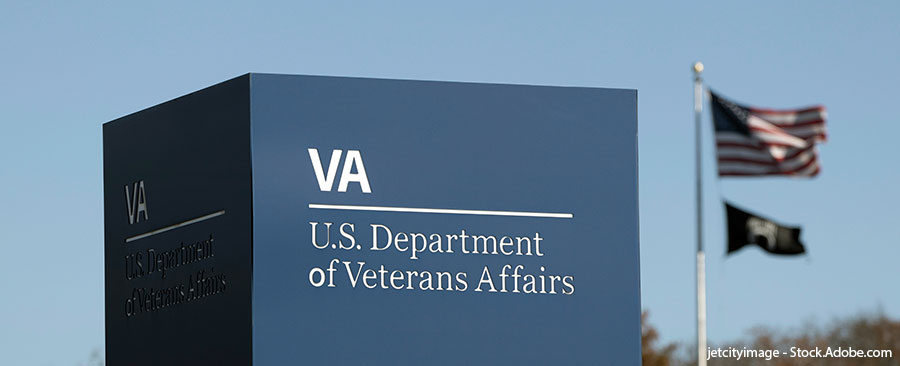 In honor of Veterans Day, The Hospitalist asked SHM members who work for the Veterans Health Administration (VHA) to share their insights on working for the largest integrated healthcare system in the U.S.
In honor of Veterans Day, The Hospitalist asked SHM members who work for the Veterans Health Administration (VHA) to share their insights on working for the largest integrated healthcare system in the U.S.
Overwhelmingly, hospitalists cited as the greatest benefit the privilege to provide care to those who served our country. They also touted many other perks, such as research and educational opportunities, and excellent benefits.
The VHA has 1,321 healthcare facilities, including 172 VA medical centers and 1,138 outpatient sites of care of varying complexity. More than 9 million veterans are enrolled in the VA healthcare program.1
Opportunities for leadership
Mel L. Anderson, MD, MACP, SFHM, completed his residency and chief residency in internal medicine at The David Grant U.S. Air Force Medical Center at Travis Air Force Base in Fairfield, Calif., and served as a faculty member there.
“After a cross-country move, I considered private practice jobs in internal medicine but was disappointed to see the focus on the business of medicine,” said Dr. Anderson, who didn’t want the perception of financial gain to come between him and his patients. Because the VHA compensated employees similarly to the Department of Defense, he sought employment there. He is now employed as the national program executive director of VHA hospital medicine and interim section chief of hospital medicine at Rocky Mountain Regional VA Medical Center, a 200-bed hospital in Aurora, Colo.
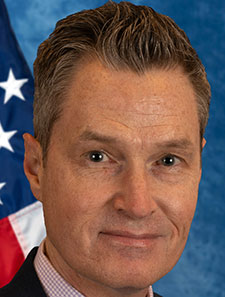
Dr. Anderson
Dr. Anderson has found many benefits to working for the VA. “For those who want a mission-driven profession in life, working at the VA is incredibly rewarding,” he said.
Because the VA is an integrated healthcare system, leadership opportunities exist at the local, regional, and national levels. “There are opportunities to create and shape policies and practice at scale,” he said.
In fact, Dr. Anderson leads 18 national hospital medicine consultants representing each of the 18 separate VA networks across the country. Each consultant meets monthly with the chiefs of hospital medicine in their network and with the other consultants. “We’ve created a very powerful structure over the last four years,” he said. “We solve problems as a group and share promising and strong practices.”
Dr. Anderson said the VA is an amazing place for medical educators to work and offers many opportunities because it has a greater proportion of teaching teams than most non-VA institutions.
Further, the VA has a research-funded infrastructure that mirrors that of the National Institutes of Health, which allows for varied and multi-faceted careers involving clinical work, teaching opportunities, and scholarly work including research. Research funding rates are higher compared to the National Institutes of Health.
Ultimately, the greatest rewards of his job are serving patients, who are often disadvantaged from a socio-economic perspective and overall comprise a highly co-morbid patient population. “On a daily basis, their heartfelt gratitude shines through,” Dr. Anderson said. “It’s a gift to care for this population.”
A great fit all around
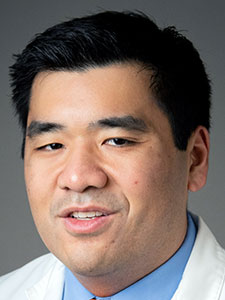
Dr. Chinn
As a hospitalist interested in medical education, Alex Chinn (@ajchinn), MD, staff physician in the department of hospital medicine at Lt. Col. Luke Weathers, Jr. VA Medical Center in Memphis, Tenn., has found working at a VA hospital to be a great fit for him. He previously worked at a university-affiliated community hospital.
In comparing the two positions, his daily routine at the VA is similar to what he experienced at his previous job. “As an integrated health system, VA patients receive most of their care within our facility or community-based clinics,” Dr. Chinn said. “I have access to primary care records and can easily reach patients’ other providers.” When a service isn’t available, an office arranges community referrals.
Although they collaborate, each VA medical center develops its hospitalist program and schedule separately, so variation exists between facilities. Hospitalists spend the majority of clinical time doing inpatient care at Dr. Chinn’s institution, but also staff the consultation service in the intensive psychiatric unit and the perioperative assessment clinics a few weeks per year. These other services have been great opportunities for Dr. Chinn to maintain his additional patient-care skill sets. He appreciates having time for non-clinical duties such as training and committee appointments built into his work schedule.
Being able to focus on doing the right thing for patients without worrying about their ability to pay for or access is refreshing. “I think most of us pursued medicine because we wanted to help people; the VA’s resources allow me to fulfill that goal,” Dr. Chinn said.
Excellent benefits allow for work-life balance. In fact, Dr. Chinn’s section chief builds clinical schedules around time-off requests. “I can take time off when I want to, without having to trade clinical time with my colleagues or work an unbearably long stretch,” he said.
Federal employee benefits are great, he continued. In addition to leave, VA hospitalists have access to a variety of insurance programs and retirement vehicles, as well as a pension plan.
“I love our patients and working with learners,” Dr. Chinn said. “It’s an honor to care for the men and women who sacrificed for our country, and I enjoy getting to know them. Helping to train the next generation of physicians is also rewarding. Although I worked with learners at my previous job, I have much more time to get to know my teams and help them achieve their goals here.”
An abundance of benefits
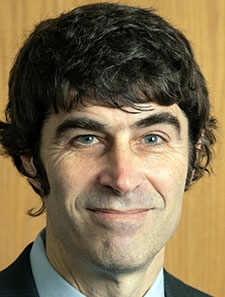
Dr. Gunderson
Craig G. Gunderson (@gunderson_craig), MD, SFHM, a hospitalist at VA Connecticut Healthcare System in West Haven, Conn., and deputy executive director of the national hospital medicine program at the VA central office, chose to work at the VA because it was the closest position he could find to true general medicine.
“I couldn’t imagine turning my back on the intense inpatient training I had just completed, and the VA job allowed me to be an inpatient attending for two months per year,” said Dr. Gunderson, who originally worked in primary care. After six years of 100% clinical care, he jumped at the opportunity to be an academic hospitalist when the first hospitalist jobs were created at the West Haven VA Hospital, a 109-bed hospital, in 2010.
The biggest difference between VA and non-VA hospitalist jobs is the availability of non-clinical opportunities, said Dr. Gunderson, including medical education, research, and administration. About half of VAs have hospitalists involved in facility leadership, including chiefs of staff and chiefs of medicine. Many VA hospitalists have non-clinical academic time for research, committee work, and quality improvement.
Regarding staffing models, some VAs use traditional seven-on, seven-off systems which fit well with VA pay periods. Other hospitalists work a certain number of two-week blocks per year, typically 32 to 40 weeks annually with the remaining being academic time.
Many opportunities for collaboration on a national level exist because more than 100 VA medical centers with thousands of hospitalist colleagues are located across the U.S., Dr. Gunderson said. Everyone uses the same electronic health record, has the same national database, uses the same email, and can message each other instantly on Microsoft Teams.
As VA employees, hospitalists have many perks, Dr. Gunderson said. Aside from the previously mentioned benefits, the salaries are federally mandated to be competitive with local community standards, the VA provides malpractice insurance, and VA physicians have statutory immunity from individual malpractice liability and can’t be sued in civil court for malpractice.
VA care is excellent and well-resourced, Dr. Gunderson continued. Studies and systematic reviews have consistently shown that VA care is superior to non-VA care in various quality measures, including outcome measures currently reported by the Centers for Medicare & Medicaid Services as well as various process measures such as cancer screening and vaccination rates.2,3
“Ultimately, the best reason to work at the VA is the patients,” Dr. Gunderson said. “The veterans are genuinely grateful for the care they receive. Some are from marginalized parts of society, and it’s gratifying to provide them with great care.”
Focusing on excellent patient care
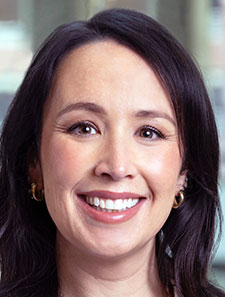
Dr. Mann
Adrienne Mann, MD, a hospitalist at the Rocky Mountain Regional VA Medical Center, (an 80-bed urban, academic hospital), and associate professor of medicine at the University of Colorado School of Medicine in Aurora, completed both medical school and residency training at the University of Colorado.
“As a trainee, I experienced impactful teaching and educational experiences at the VA,” she said. The clinicians and educators in hospital medicine prioritized outstanding patient care, education, and service. When I was asked to join the group, it was a no-brainer to do so.”
Because the group spends a lot of time teaching, the work schedule is structured in one- or two-week blocks to allow for as much continuity as possible with residents and patients while also prioritizing flexibility for non-clinical activities.
In her 10 years at the VA, Dr. Mann has been grateful for the chance to do what is best for her patients and learners with few exceptions. “For patients, we have access to incredible resources for mental health, housing, rehabilitation, and specialty care that aren’t available outside the VA.”
Working within the VA system allows for nearly seamless transitions from outpatient to inpatient care. “I can always get in touch with a patient’s primary care physician or specialist to ensure transitions are as safe and smooth as possible,” she said. “I rarely spend time on the phone with insurance companies—instead, I have more time at the bedside or to engage with my team’s chalk talks.”
For learners, a group of academic clinicians is committed to creating an exceptional and supportive learning environment for learners of all levels. “Our group encourages us to engage meaningfully in order to bring up the next generation of physicians and we’re empowered to construct learning environments and experiences that will challenge and prepare them to be future healthcare leaders.”
Dr. Mann’s team of clinicians, educators, and leaders inspire her to continue to grow and learn. “I’m often blown away by all that they do, and I get to align with them in our shared values of service, outstanding patient care, lifelong learning, and meaningful interpersonal connections,” she said.
An outstanding educational opportunity
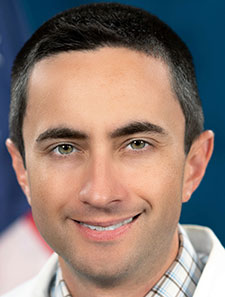
Dr. Shaniuk
During his internal medicine/pediatrics residency and chief residency year, Paul M. Shaniuk (@pshaniuk), MD, director of inpatient medical services in the department of acute care internal medicine at the VA Northeast Ohio Healthcare System in Cleveland, an academic VA hospital with approximately 180 acute-care beds, had rotations at a VA. “I was drawn to the enriching educational environment,” he said. “My clinical rotations were challenging and rewarding, and the faculty were kind, supportive, and innovative.”
Dr. Shaniuk was thrilled to land a job at a VA after residency. “Working with veterans is deeply meaningful,” he said. “Providing high-quality healthcare to those who served our country is a privilege; I take pride in being able to give back to veterans.”
“The VHA is a mission-based organization, trying not just to live by the I-CARE values (integrity, commitment, advocacy, respect, and excellence), but also to fulfill President Lincoln’s promise to ‘care for those who have borne the battle.’ Our North Star in everything we do is to care for veterans.”
One difference between working at a VA compared to community hospitals is that some patients have service-connected conditions, so Dr. Shaniuk has learned about the health consequences of Agent Orange exposure and post-traumatic stress disorder, for example.
Balancing the academic mission with the essential work of patient care can be a challenge, although not one unique to the VA, Dr. Shaniuk said. VA academic physicians have the advantage of leveraging relationships with local medical schools and graduate medical education programs to open doors for academic career growth. A difference related to patient care is that the physician payment system is based on hours or salary, rather than a strict relative value units (RVU) requirement.
Many tangible benefits to working within the federal healthcare system exist, Dr. Shaniuk said. Patients have access to affordable medications and resources that they might not have otherwise. “I rarely need to negotiate with insurance companies, which allows me to focus more directly on patient care,” he said.
The VA’s ability to negotiate with pharmaceutical companies to ensure access to affordable medications is an amazing benefit. “I can skip the prior authorization process in most instances and work directly with pharmacy colleagues,” Dr. Shaniuk said. In addition, the VA works hard to ensure that patients’ social determinants of health are factored into their care.
The perfect place for research
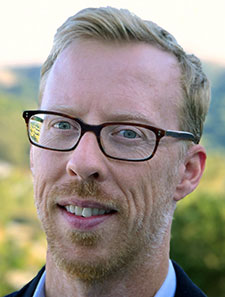
Dr. Wray
Like many physicians, Charlie Wray (@WrayCharles), DO, MS, SFHM, associate professor at the University of California, San Francisco, and the San Francisco VA Health Care System, a 200-bed veterans’ hospital, completed much of his residency training at a VA hospital.
“This early exposure to the VA healthcare system was extremely influential in my decision to pursue a career at the VA,” Dr. Wray said. “VA providers work with unique and special patient populations—the men and women who served in our nation’s military.”
As a young health services researcher, Dr. Wray immediately recognized additional benefits to working as a scientist in the country’s largest integrated healthcare system. He had access to clinical, social, and systems data, most of which wasn’t available elsewhere. “All of these perks made the decision to start my career as a VA hospitalist a no-brainer,” he said.
“The VA offers an incredible number of opportunities regardless of your extra-clinical pursuits,” Dr. Wray said. “I split my time as a hospitalist and health services researcher; the VA is unparalleled when it comes to accessing data for my research.”
Another difference between community and academic hospitals compared to VA hospitals is that the VA offers care beyond a veteran’s physical ailments and works to improve veterans’ lives beyond a clinic or hospital. For example, they provide iPads to veterans who live far away so they can engage with practitioners through telehealth. “As a provider, it’s extremely rewarding and gratifying to have your healthcare system go above and beyond what other systems do,” he said.
The biggest challenge of working at a VA hospital is getting used to government bureaucracies, Dr. Wray said. “At first, the hoops you have to jump through to get something done can be frustrating,” he said. “Over time, though, you get a better feel for how the system works and how to expedite certain things so patients can get the care they need.”
Many VA hospitals are affiliated with teaching institutions, which opens up opportunities to teach and educate future physicians. Leadership and administrative pathways are available as well. “With a little bit of mentorship and guidance, you can easily carve out a career that’s right for you at the VA,” Dr. Wray added. “The opportunities to grow beyond clinical medicine are unrivaled.”
Dr. Wray feels fortunate that his hospital is affiliated with a teaching center (University of California, San Francisco) which allows him to practice and teach medical students and residents. “The combination of having smart, energetic learners along with the opportunity to care for veterans makes the San Francisco VA a special place to practice medicine,” he said.
Dr. Wray’s colleagues add to the enjoyment of his job. “They are some of the brightest, most kind individuals I’ve ever worked with,” he said. “Their humility, kindness, and hard work make my daily life at the VA wonderful.”
Karen Appold is an award-winning journalist based in Lehigh Valley, Pa. She has more than 25 years of editorial experience, including as a newspaper reporter and a newspaper and magazine editor.
References
- Veterans Health Administration. About VHA. U.S. Department of Veterans Affairs website. Available at: https://www.va.gov/health/aboutVHA.asp. Accessed October 3, 2024.
- Apaydin EA, Paige NM, et al. Veterans Health Administration (VA) vs. non-VA healthcare quality: a systematic review. J Gen Intern Med. 2023;38(9):2179-88.
- Anhang Price R, Sloss EM, et al. Comparing quality of care in Veterans Affairs and non-Veterans Affairs settings. Gen Intern Med. 2018;33(10):1631-8.